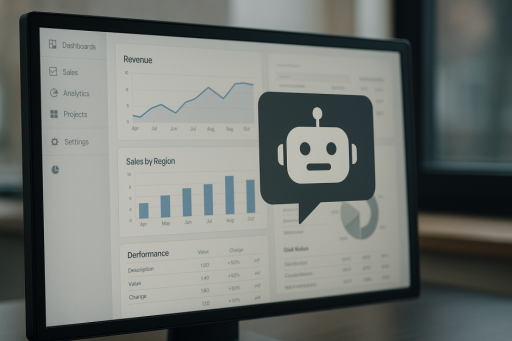how to implement AI in enterprise software
Implementing AI in Enterprise Software: Expert Strategies for 2025
Discover how leading enterprises are integrating AI for competitive advantage, with hands-on insights, technical benchmarks, and proven deployment models.
Market Overview
Artificial intelligence (AI) has become a cornerstone of enterprise software strategy in 2025, with adoption rates accelerating across industries. According to recent market data, over 70% of large enterprises have initiated AI-driven projects, and global investment in enterprise AI is projected to surpass $200 billion this year. Major technology vendors—including Microsoft, SAP, Google, and Amazon—are embedding advanced AI capabilities into their platforms, such as Microsoft Copilot for ERP and Google Gemini for cloud applications. Partnerships like SAP and NVIDIA are driving generative AI (GenAI) adoption, enabling enterprises to leverage data at scale for automation, predictive analytics, and decision support. The shift from traditional SaaS to AI-native solutions is also unlocking new revenue models, such as usage-based and outcome-based pricing, aligning software value with business outcomes.[1][3][4]
Technical Analysis
Implementing AI in enterprise software requires a robust technical foundation. Key trends include the rise of agentic AI for autonomous workflows, multimodal AI for processing diverse data types, and reasoning-centric AI for complex decision-making. The Model Context Protocol (MCP) standard is gaining traction, enabling seamless integration between AI models and enterprise systems. Retrieval-Augmented Generation (RAG) architectures are being adopted for accurate, context-aware information retrieval. Edge AI is enabling real-time processing at the data source, reducing latency and infrastructure costs. Compact AI models, such as those under 1B parameters, are favored for their efficiency and ease of deployment. Benchmarks show that compact models can deliver ROI within 3-6 months, while more complex multimodal or reasoning-centric systems may require 6-12 months for full value realization.[2][3]
Competitive Landscape
The enterprise AI market is highly competitive, with tech giants and specialized vendors racing to deliver differentiated solutions. Microsoft has invested over $40 billion in AI, integrating Copilot across its product suite and partnering with OpenAI. SAP and NVIDIA are collaborating to accelerate GenAI in cloud ERP, while Google’s Gemini and Amazon’s AWS AI services are pushing the boundaries of model performance and integration. Salesforce’s Agentforce AI platform has secured over 3,000 paid enterprise customers since late 2024, demonstrating rapid market traction. ServiceNow is pioneering usage-based and outcome-based pricing for AI-driven workflows. Compared to traditional SaaS, AI-native platforms offer greater flexibility, deeper automation, and more granular analytics, but require careful integration and governance.[3][4]
Implementation Insights
Successful AI implementation in enterprise software hinges on several best practices:
- Start with high-impact, low-complexity use cases—such as automating repetitive tasks or enhancing reporting with predictive analytics.
- Leverage compact models and platforms supporting MCP standards for easier integration and lower infrastructure overhead.
- Partner with experienced AI vendors or consultants to access technical expertise and accelerate deployment.
- Prioritize data integrity and governance to ensure AI outputs are trustworthy and compliant with evolving regulations.
- Plan for incremental upgrades—edge AI and compact models can be deployed with minimal disruption, while multimodal or reasoning-centric systems may require infrastructure enhancements.
- Monitor ROI closely: Compact and edge AI solutions often deliver measurable value within 3-6 months; more advanced deployments may take up to a year.
Real-world challenges include data silos, integration complexity, and the need for ongoing model monitoring. For example, a global retailer deploying AI agents for supply chain optimization achieved a 15% reduction in inventory costs within six months, but required significant investment in data quality and change management.[1][2]
Expert Recommendations
To maximize the value of AI in enterprise software:
- Align AI initiatives with business objectives—focus on measurable outcomes such as cost reduction, revenue growth, or customer experience improvement.
- Invest in workforce upskilling to ensure teams can leverage AI tools effectively and responsibly.
- Adopt a modular, standards-based approach (e.g., MCP) to future-proof integrations and facilitate vendor interoperability.
- Continuously evaluate AI models for accuracy, bias, and compliance, especially as regulations evolve.
- Monitor the competitive landscape—stay informed about new AI capabilities, pricing models, and vendor partnerships to maintain a strategic edge.
Looking ahead, AI will become an essential layer in enterprise software, driving innovation and operational excellence. Organizations that invest early in scalable, standards-based AI architectures will be best positioned to capture long-term value.[1][2][4]
Recent Articles
Sort Options:

Article: Agentic AI Architecture Framework for Enterprises
To deploy agentic AI effectively, organizations should adopt a three-tier architecture: Foundation, Workflow, and Autonomous tiers. This approach emphasizes the importance of trust, governance, and transparency as prerequisites for achieving true autonomy in enterprise AI applications.

I Want AI In My Business In The Best Way
Businesses are navigating the complexities of AI integration. The publication offers essential insights and strategies to ensure successful implementation, helping organizations harness the power of artificial intelligence effectively and efficiently.

Inside The AI Hype Cycle: What’s Next For Enterprise AI?
A recent article explores the challenges enterprises face in deploying AI, highlighting critical issues such as safety and data security. The discussion emphasizes the importance of addressing these concerns to ensure successful AI integration in business operations.

The hidden scaling cliff that’s about to break your agent rollouts
Enterprise teams face challenges in scaling AI agents across departments, as traditional software development methods fall short. May Habib explores innovative strategies Fortune 500 companies are adopting to overcome these obstacles and enhance AI integration.

The path to Agentic AI: overcoming complexity to embrace the autonomous enterprise
The future of enterprise AI is evolving towards agentic workflows, enabling businesses to automate complex processes. However, organizations face challenges in technology upgrades, governance, and trust, necessitating strategic planning to harness AI's full potential effectively.

Smooth the Path to AI Agent Adoption for Software Engineers
Enterprises are urged to establish clear use cases for AI agents to promote effective utilization among developers and facilitate smoother adoption. This strategic approach is essential for harnessing the full potential of artificial intelligence in various industries.

5 Real-World Lessons From Using AI To Transform Legacy Software
Businesses recognize the potential of AI but seek guidance on effective implementation strategies. The article explores how companies can harness AI's value to enhance operations and drive innovation in today's competitive landscape.

Business Software and the Urgency of Adopting Agentic AI
The rise of agentic AI is transforming enterprise software, enabling autonomous agents to analyze data and execute tasks without human prompts. This shift promises enhanced productivity and efficiency, urging businesses to adapt their tech strategies for competitive advantage.